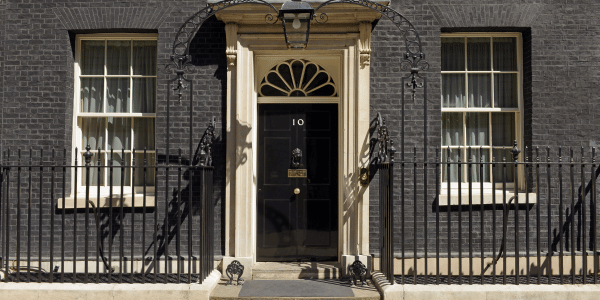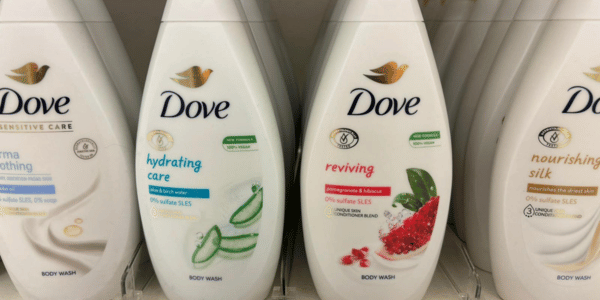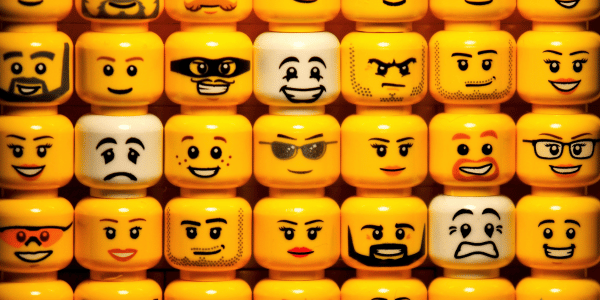It’s typical to make some form of resolution at the start of a new year – a commitment to ourselves to do better, be better than we were during the year before. Personal pursuits might include aiming to eat better, exercise more or simply to make more plans with family and friends.
Professionally, it might be you’ve set yourself the goal of learning something new or, at the very least, a commitment to not repeat the missteps of the year before.
For this latter point, it might not be a mistake you’ve made personally but the mishaps of others which provide some food for thought and a learning opportunity for the year ahead.

Lesson 1: Reading the room (or… How to get it wrong)
We need look no further than the PR team working for the UK’s Prime Minister for a recent example of exactly this.
The UK Government isn’t unfamiliar with public scrutiny, but it’s fair to say that 2023 held a lot of it. From the ongoing fallout of the Covid enquiry to claims of dubious public spending, rule-breaking, and the questionable ethics of senior-level MPs, a growing lack of trust in the current Prime Minister Rishi Sunak and his party has led to far lower public approval ratings than ever before.
So it’s understandable that as the festive season approached, and with the threat of a general election looming on the horizon for 2024, the Prime Minister’s PR team was keen to do something to try and re-endear him to the public.
The result was a holiday promo video which aimed at fun but landed instead in the realms of farce.
To set the scene – Mr Sunak finds himself working hard on Christmas Eve in No. 10 and, upon discovering the rest of his staff have gone home for the holidays, decides to have some festive fun in the offices.
Some scenes, such as watching the PM treat himself to a snack of spaghetti, marshmallows and maple syrup whilst watching Elf in the boardroom, and raiding the tree for chocolates are perhaps described as awkward at best. Others, such as playing cricket against makeshift stumps of Coke cans (whether this is product placement or a far more risqué joke is anyone’s guess) and a phone call to the press desk made by someone alluded to as “Harry” are deeply uncomfortable.
Whilst a light-hearted Christmas message is often something that goes down well with an audience, the general consensus of the public once the video was released was that, quite frankly, they expected better from the man holding the most powerful seat in the country.
Aside of coming across as hopelessly insincere, out of touch and more than a little self-satisfied, in a year that has been notoriously difficult for his party, and with the wider context of ongoing economic woes and a cost of living crisis, it seemed people were hoping for something a little more constructive – a vow to do better in 2024 perhaps? Or the simple acknowledgement that this Christmas would be especially hard on many families?
Whilst some supporters graciously accepted the spirit of it all, the general public felt a mix of mocked, or ignored. Needless to say, the video hasn’t helped his image on the whole. Even Larry, the resident Number 10 cat seemed reluctant to be seen with him.
Where did they go wrong?
What can we learn from this? Well, other than reinforcing that you should never work with animals on TV, it’s important that your PR team has a good sense of how the land lies when it comes to how your audience, and those you hope to reach, perceive you. Whilst the video must have met with approval internally, the reaction was markedly different once it was shared outside of the immediate Governmental bubble.
When you place your reputation in the hands of a PR team you need to be confident that they’ve done their homework. It’s vital they know your sector, understand your target audience and have developed a good sense of how you are truly seen by them. Most importantly, a good PR team must be prepared to be up front and honest with you about it – no matter how difficult that conversation may be.
Only by doing this can you hope to engage in a way that truly challenges any negative perceptions people may hold of you and begin to change minds.
The other element is authenticity. PR might be about telling stories, painting a better picture and enhancing public perception but this can’t be done with smoke and mirrors. Authenticity must be at the centre of any campaign or public outreach, and must be able to be clearly perceived if you are to change hearts and minds beyond those you’ve already won over.

Lesson 2: Building authenticity and making impact
To provide an example of how this can be done right, we can look to skincare brand Dove. For a number of years, Dove has worked to make its name synonymous with ideals such as care and wellness. This year, the brand publicly committed itself to the promotion of mental wellness too.
Whilst some skincare brands might have been content to simply champion all body types as means of showing their sense of inclusivity (and bringing in more customers of course), Dove’s Self-Esteem project has provided the brand with a platform for action.
Recognising that its customer base might both include parents and teenage children, Dove dug a little deeper into what elements of modern life might cause mental harm, launching its Campaign For Kids Online Safety in April 2023. By partnering with non-profits in the media safety sector, family charities, celebrities and influencers, Dove pushed for the introduction of the Kids Online Safety Act in the USA – a bill which establishes guidelines to protect minors on social media. Its efforts were rewarded the following month.
Why did it work?
Why is this such a good example or PR done right? Well, aside of the campaign not being designed around a hard sell for products (keeping it out of the realms of advertising), the Self-Esteem project took Dove beyond its competitors actions by demonstrating a true commitment to looking after its customers and wider society. Its long-established commitment to wellness lent a great deal of authenticity to its efforts and helped ensure that customers got behind the cause and bought into what they wanted to achieve. The result? A well-regarded brand with solid morals, and the capacity to create a positive impact. Job done.
But what if you don’t know what your audience wants?

Lesson 3: Listen! Then act.
When you have a successful product it might be difficult to consider how to change it, improve it and grow it. But longstanding brands need to not only keep coming up with the goods by innovating, but also ensure they can remain well-regarded to maintain a solid network and keep customers coming back.
A brand which has managed to innovate, develop and grow whilst staying true to its roots is global play giants Lego. Despite an evergreen popularity, global recognition and more than steady sales, Lego has found roaring success over the last decade by diversifying its portfolio.
Evolving from standard brick sets, Lego now embraces pop culture (with Lego Harry Potter, Batman and Star Wars being just a few examples), global landmarks, the re-issue of classic sets and even reimagining famous artwork in brick form, bringing in builders young and old. One way or another, Lego is attempting to create something for everyone.
But can a company always know what their customers want?
Rather than assuming they knew the answer, Lego consulted more than 30,000 parents and 24,000 children and found that what customers craved was greater representation in the toys they played with.
From this a movement was born, and Lego has been active in its mission to embrace diversity beyond whether children prefer building race cars or fairy castles.
In 2023, inspired by a letter sent to Lego HQ from a young girl expressing a desire to play with Lego characters who shared the same physical disability as her, Lego figures with physical health conditions were released onto the market, to great success.
When asked in an interview with Yahoo Life why they’d gone to the effort of creating such a set based off one customer letter, a Creative Director at the company simply said they wanted to provide children with the “tools they need to play out their own experiences”.
Why did it work?
It’s quite simple really. By investing in creating more diverse figures and build sets, Lego demonstrated in one fell swoop that not only did it not have all the answers, despite its longstanding success, but that no one customer was less important than another. Inclusivity at all levels. By responding to exactly what customers wanted Lego presented itself as an approachable, morally sound company – not an easy feat for a global giant.
It also, like Dove, engaged in action that matched the company’s ethos of “supporting a more creative and resilient society” and “having a positive impact on the world… [children].. live in today and will inherit in the future”.
Of course, to that latter goal, Lego has other challenges to face on its horizon – namely how to champion sustainability when its main product is plastic… but that’s perhaps a challenge to tackle in 2024.
So as you look to 2024 and your own PR plans – whether you have a big campaign planned or a number of smaller steps to take, it might pay to remember these three lessons; do your research, embrace authenticity, and take meaningful action.
And it doesn’t hurt to get a little external help with all three… Interested in finding out how we can support you? Get in touch.

Kerry is the Strategic Communications and Editorial Lead at BlueSky Education and a former BBC journalist. Recognised in the graduate management education arena as a leading authority on communications for the industry, Kerry has more than a decade of experience in the media and public relations.



